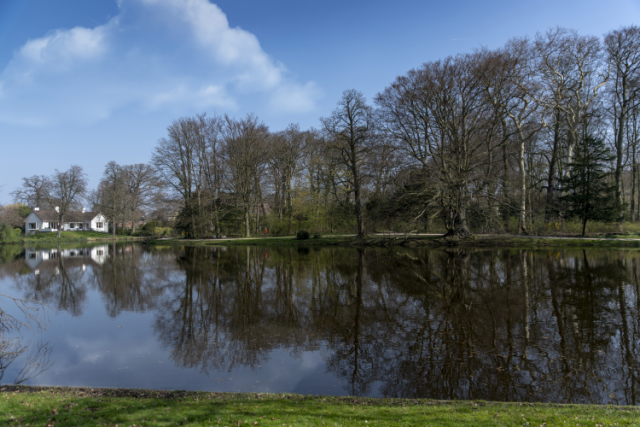Comprehensive restoration of green heritage
Historic parks visible again
Over three years ago, the first repairs to the historic parks De Paauw and Backershagen were carried out. After pruning, cutting down and clearing up overgrown and worn-out greenery, work began on the (re)landscaping of both parks. The redesign will take place on the basis of planting plans in which the municipality assumes the historical image of a century and a half ago. In recent years, over 300 trees and more than 2,500 shrubs have been planted. The walking and biking paths have also been restored based on historical map material. As a result, the park structures of a century and a half ago are visible again.
Final repairs
This year the final repairs will take place. For park De Paauw this involves the construction of a bridge behind the Princess Garden and the replacement of two footbridges. For park Backershagen it is about the construction of a new bridge near the Donkey Meadow and the restoration of the moss mounds.
Plans for the coming years
The municipality of Wassenaar is also committed to restoring its historic estates in the coming years. The restoration plan for park Rust en Vreugd has been completed. The first repairs are now underway. This implementation will take place in consultation with the Welfare and Cultural Heritage Committee (WCE). The cultural-historical value of the landscape park and in particular the park as it was created in the period Van Aken (1846-1904) is leading in the restoration of the park. The restoration measures will take into account the current natural values of the park so that there will be a good balance between cultural history and nature.
In the list of historical parks managed by the municipality of Wassenaar, only park De Wittenburg is still missing. Preparations for park restoration have also begun for this park. The cultural-historical research has now been completed. The historical country estate De Wittenburg is characterized by a phased garden and park layout. This garden and park layout has a high cultural and garden-historical value because of the combination of the landscape and mixed garden style - for the oeuvre of garden architects Copijn and Springer and because of the image-defining and ensemble value - and thus forms an important part of the estate zone in Wassenaar. You can download the presentation held during the residents' evening at the bottom of the page.
